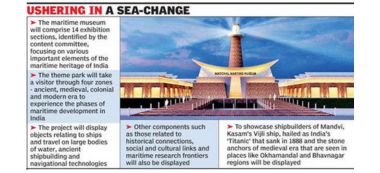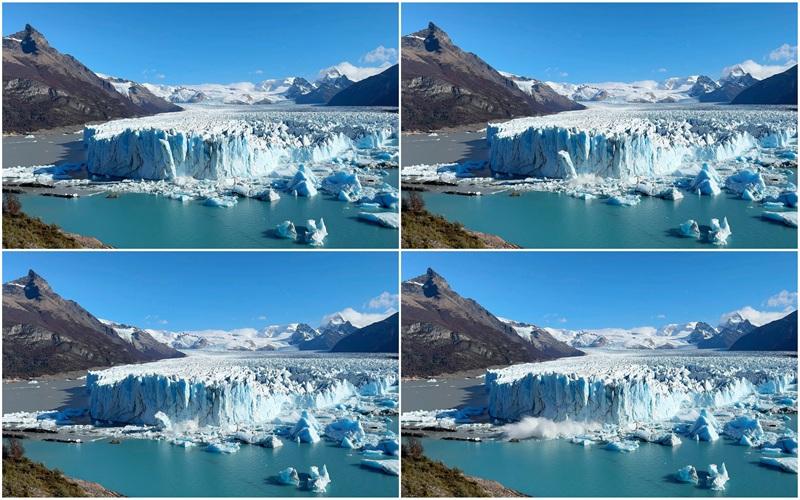- Courses
- GS Full Course 1 Year
- GS Full Course 2 Year
- GS Full Course 3 Year
- GS Full Course Till Selection
- Online Program
- GS Recorded Course
- NCERT (Recorded 500+ Hours)
- Polity Recorded Course
- Geography Recorded Course
- Economy Recorded Course
- AMAC Recorded Course
- Modern India, Post Independence & World History
- Environment Recoded Course
- Governance Recoded Course
- Science & Tech. Recoded Course
- International Relations and Internal Security Recorded Course
- Disaster Management Module Course
- Ethics Recoded Course
- Essay Recoded Course
- Current Affairs Recoded Course
- CSAT
- 5 LAYERED ARJUNA Mentorship
- Public Administration Optional
- ABOUT US
- OUR TOPPERS
- TEST SERIES
- FREE STUDY MATERIAL
- VIDEOS
- CONTACT US
Lothal Maritime Heritage Complex will be a bridge between past, present & future
Lothal Maritime Heritage Complex will be a bridge between past, present & future
30-12-2024

-
Purpose & Vision of the National Maritime Heritage Complex (NMHC)
- The National Maritime Heritage Complex at Lothal, Gujarat, is set to preserve and promote India’s maritime heritage, highlighting the country’s historical leadership in maritime trade, shipbuilding, and global cultural exchanges.
- Prime Minister Narendra Modi envisions this project as a way to showcase India's historical prominence as a maritime power while also supporting modern development and heritage preservation.
- The complex will feature a museum and cultural center, aimed at tourism, research, and education, portraying India’s maritime history that spans thousands of years, from ancient dockyards to trade routes.
-
Key Features & Structure
- Museum and Cultural Center: A major part of the complex dedicated to showcasing India's maritime history, including ancient trade routes, shipbuilding techniques, and India’s global maritime connections.
- The complex will act as a bridge between the past, present, and future, demonstrating India’s ancient maritime influence and its ongoing development as a global maritime power.
- The complex will also feature state-of-the-art facilities for research on global maritime culture, promoting knowledge-sharing and collaboration with international scholars.
-
International Collaboration & Engagement
- 20 countries have been engaged in discussions regarding joint research, excavations, and maritime exhibitions. The government has already signed MoUs with Vietnam, Portugal, and the UAE.
- The project will facilitate collaborations with archaeological institutes and universities worldwide for joint excavations and research into ancient maritime trade routes.
- Ongoing negotiations include potential MoUs with Myanmar, Sri Lanka, Mauritius, Maldives, Iran, Bahrain, Oman, Iraq, Egypt, and several European and Asian countries (e.g., France, Greece, Italy, Indonesia, Thailand, Japan, etc.).
- The Ministry of External Affairs is coordinating these efforts to establish India’s global maritime heritage as an integral part of international historical narratives.
-
Development Timeline
- Phase 1 of the project is scheduled to be completed by August 2025, and the entire project is expected to be finalized by 2028.
- The complex will not only focus on historical preservation but will also aim to provide a comprehensive visitor experience, integrating tourism, education, and interactive exhibitions.
-
Economic Impact
- The complex is expected to attract 25,000 visitors per day once completed, contributing significantly to the local economy.
- The project will generate approximately 22,000 jobs directly related to tourism, hospitality, infrastructure development, and services in the surrounding areas.
- Local infrastructure (e.g., roads, hotels, transportation) is expected to see major upgrades to accommodate the growing number of visitors, further driving economic activity.
-
Safety and Protocols for Research
- An incident occurred recently when an IIT Delhi researcher tragically passed away while collecting soil samples for study at Lothal.
- This incident has led to consultations on safety protocols for archaeological and field research.
- The matter has been primarily handled by the Archaeological Survey of India (ASI), and the Ministry of Ports, Shipping and Waterways was not directly involved in the issue.
-
Maritime Vision and Port Development
- India's Maritime Ambitions: India aims to reclaim its position as a global maritime leader by enhancing port infrastructure and increasing cargo handling.
- Two major port projects are in development:
- Vadhavan Port on the West Coast (Maharashtra).
- Galathea Bay Port on the East Coast (Great Nicobar Island).
- By 2047, India aims to handle over 10,000 million metric tonnes of cargo annually, a massive increase from the current capacity of 1,600 million metric tonnes.
- These initiatives are part of a broader strategy to expand India’s global trade capacity, strengthen its maritime infrastructure, and assert itself as a global maritime power.
-
India’s Maritime Role in Global Trade
- India has historically been a maritime power with a strategic location, vast coastline, and strong trade routes that connected it with Africa, the Arabian Peninsula, and Southeast Asia.
- Despite this rich maritime history, India has not fully capitalized on its potential as a global maritime power in recent decades. The government is now working to rectify this by focusing on port infrastructure, expanding shipping routes, and strengthening global maritime partnerships.
- The government’s goal is to position India as a major player in global maritime trade, driving economic growth and enhancing its shipping and cargo handling capabilities.
Expected Outcome: By 2047, India’s maritime sector is projected to handle 10,000 million metric tonnes of cargo annually, boosting the economy and making India a key player in the global shipping industry. The National Maritime Heritage Complex will serve as both a cultural beacon and a symbol of India’s growing maritime influence, connecting the country’s ancient maritime past with its future ambitions.
|
Also Read |
|




